
views
X
Research source
Understanding debits and credits is essential for bookkeeping and analysis of balance sheets.
Learning the Terms

Familiarize yourself with the meaning of "debit" and "credit." In bookkeeping, the words "debit" and "credit" have very distinct meanings and a close relationship. Debits and credits balance each other out —if a debit is added to one account, then a credit must be added to the an opposite account. Two related terms are "equity" and "liability." Equity is what is left over after subtracting all assets, and liability is how much is owed to other parties. In accounting, the debit column is on the left of an accounting entry, while credits are on the right. Debits increase asset or expense accounts and decrease liability or equity. Credits do the opposite — decrease assets and expenses and increase liability and equity. To make sense of this, take a look at the basic accounting equation, which is Assets = Equity + Liabilities. Assets are paid for by equity and/or liability —you cannot have one without the other. So if you complete a transaction that increases assets (and you debit the asset account), you must also increase the equity or liability (by crediting the equity or liability account) so that Assets remain equal to Equity and/or Liability.
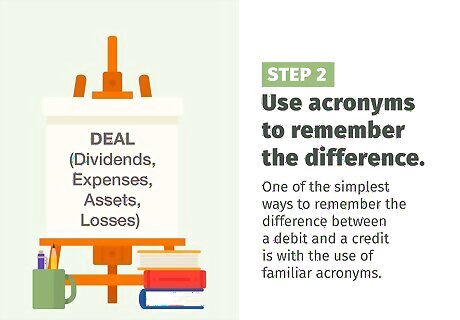
Use acronyms to remember the difference. One of the simplest ways to remember the difference between a debit and a credit is with the use of familiar acronyms. Generally, these types of accounts are increased with a debit: Dividends, Expenses, Assets, Losses (DEAL). Generally, these types of accounts are increased with a credit: Gains, Income, Revenues, Liabilities, Stockholders' Equity (GIRLS).
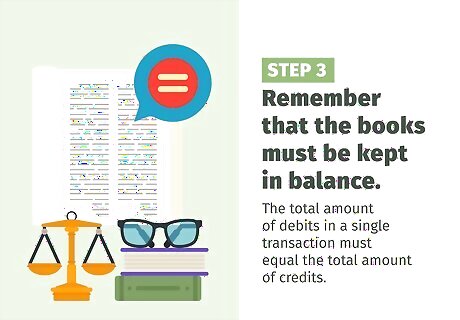
Remember that the books must be kept in balance. Remember that if you debit one account, you're going to need to credit the opposite account. Whenever there is an accounting transaction, at least two accounts will always be impacted. The total amount of debits in a single transaction must equal the total amount of credits. For example, if you pay down your Accounts Payable account (a liability) with $20,000 in cash (an asset), you'll need to adjust both accounts. In that case, you'll credit Cash for $20,000. That will reduce your cash amount by $20,000. To keep your books in balance, you'll need to debit Accounts Payable by $20,000. That will likewise reduce your Accounts Payable amount by $20,000.
Recording Debits and Credits Correctly
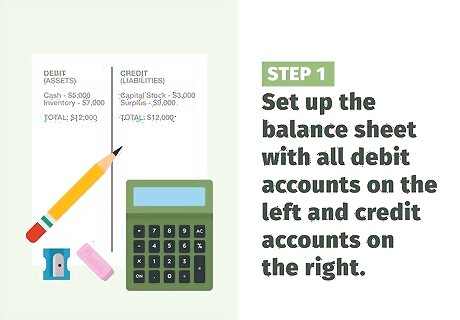
Set up the balance sheet with all debit accounts on the left and credit accounts on the right. For illustration, assume that ABC Company has $5000 cash, $7000 inventory, $3000 capital stock, and $9000 surplus.
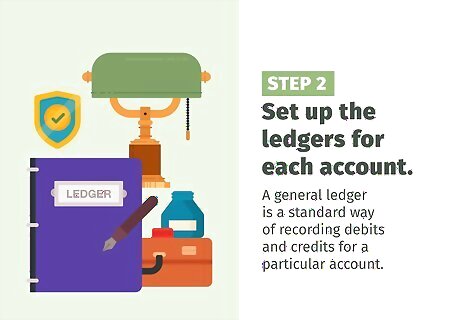
Set up the ledgers for each account. A general ledger is a standard way of recording debits and credits for a particular account. Place the debit balance on the left and the credit balance on the right. Remember that debit accounts have debit balances and credit accounts have credit balances.

Consider what is being exchanged when entering a transaction. Whenever a transaction occurs, something is being exchanged for something else. For example: Does the transaction change the amount of cash, the amount of receivables, the inventory value, or add to an expense? Suppose the company in our example has subsequently sold on credit $4,000, which cost it $2,800, and incurred various expenses totaling $500 paid in cash. So this transaction impacted the following accounts: Accounts Receivables, Inventory, Cash, and Surplus (for simplicity, all all profit and loss as credit or debit will be logged in the Surplus account). If the transaction increases a debit account, record a debit entry in that debit account, and simultaneously a credit entry in an appropriate credit account. Continuing with our example, you would debit Accounts Receivables $4,000, then credit Surplus with a corresponding $4,000. If the transaction decreases a debit account, record a credit entry in that debit account, and simultaneously a debit entry in an appropriate credit account. The cost of goods sold of $2,800 decreases the inventory, and is therefore a credit entry. It will have a corresponding $2,800 debit entry from Surplus. The $500 expenses paid in cash decreases the debit account Cash, so you would enter $500 credit in the Cash account. It will have a corresponding $500 debit entry from Surplus.
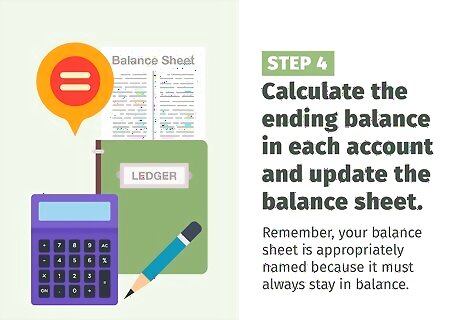
Calculate the ending balance in each account and update the balance sheet. Remember, your balance sheet is appropriately named because it must always stay in balance. The overall value of your assets must equal the value of your liabilities plus the value of your equity.



















Comments
0 comment